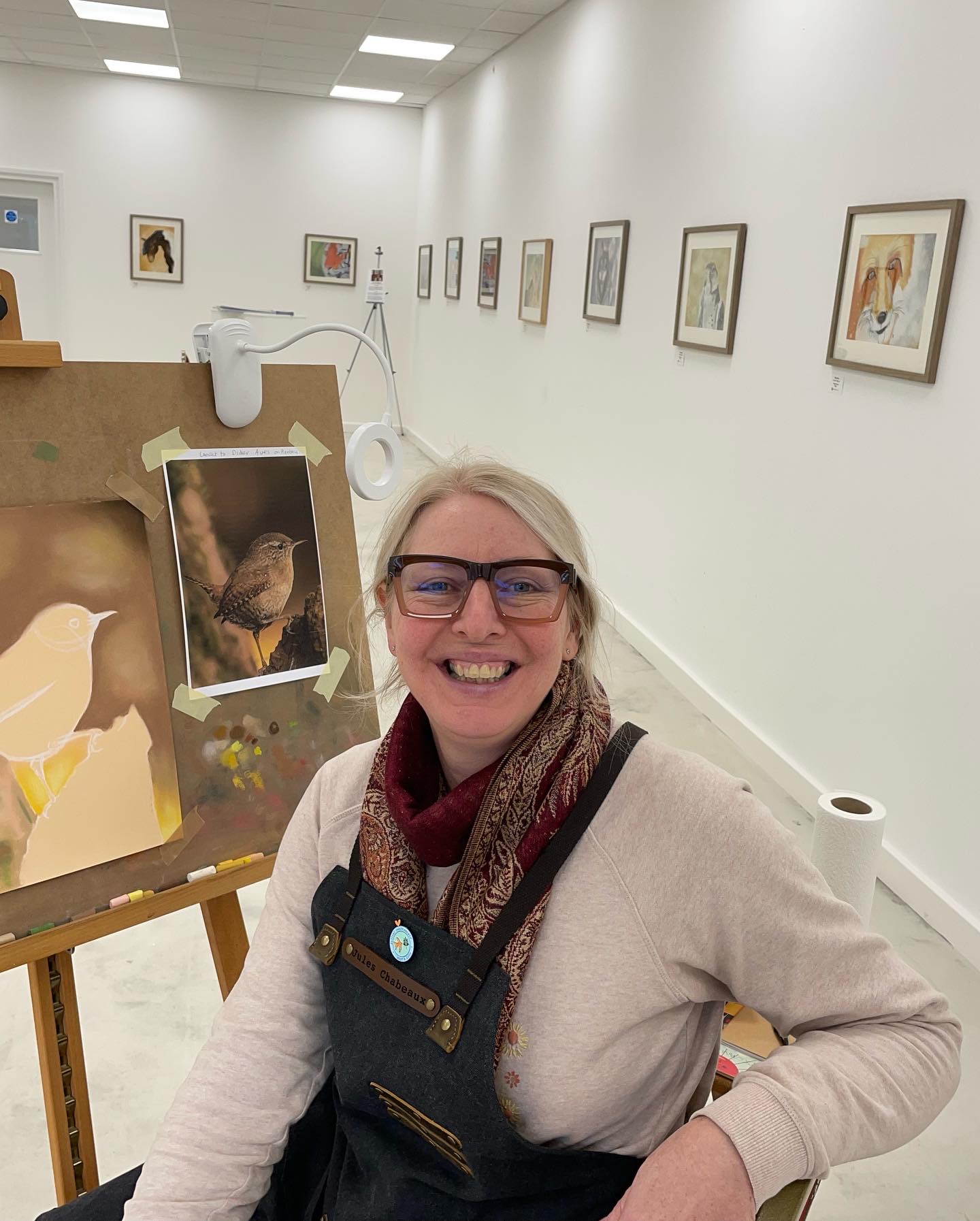Part Three: Bid For Beavers! Who Are These Amazing Beings?
- Jules Chabeaux - Wildlife Artist

- May 9, 2023
- 4 min read
Why are they known as eco-engineers? Plus why supporting their reintroduction is such a good idea and how YOU can get involved!

Hello there and welcome to Part Three of my short series of posts all about wonderful Beavers and my special Spring online auction in support of them! Today we are looking at who these amazing beings are and why they are so important in our eco systems.
If this is the first in my mini series you have seen please do also read my two short posts - Part One HERE and Part Two HERE to learn more about my silent charity online auction and how you can get involved, bidding to bring my Original Fine Art "The Heart Shaped Beaver" into your home (or a special gift for a loved one) supporting the Derbyshire Wildlife Trust with 40% of your winning bid. I have already received some bids, thank you so much to those of you that have entered! My auction ends at midday (UK) on May 20th 2023, so there is still time for you to take part. Read part one for all the details and to place your bid.

Who Are These Amazing Beings?
So let's get started today by delving into a few facts about these wonderful beings. Did you know that they are the second largest rodent in the World, the largest is the Capybaras? Beavers can grow up to 1.2m in length! They can weigh up to 30kg.
Beavers have fortified teeth, perfect for their key role as eco engineers. Strengthened with very high levels of iron their teeth are actually orange and super strong! Beavers are herbivores and ONLY eat plants and trees. There are many mistaken beliefs that they eat fish but this is incorrect. They are capable of gnawing down trees (which is actually coppicing, which encourages new growth in trees) to make dams and for food. They also create a network of canals through the wetlands. These are key parts of their service to the natural world, they reduce flood risks, by slowing the flow of water and also help to reduce droughts during periods of low rainfall. This helps to restore wetlands to balance, opening up flourishing habitats for huge numbers of species that really need urgent support. This whole process also helps to improve water quality, which is another key benefit for us all. Their work benefits carbon sequestration too, which is something we must be encouraging as we work to slow climate change.
Here in the UK, Beavers went extinct around 400 years ago due to human hunting. In Derbyshire, where I live, it had actually been 800 years since Beavers lived here. That was until the Derbyshire Wildlife Trust (DWT) reintroduced four of them back in September 2021 at Willington Wetlands Reserve. What a special occasion this was.
Willington Wetlands Reserve, South Derbyshire

Two pairs of Eurasian Beavers were successfully reintroduced to this 40+ hectare Beaver proof enclosure in the Autumn of 2021. The DWT have been carefully and scientifically studying the effects that they have been having on the site and share video footage of their amazing progress which you can view HERE You can explore the videos and read more about all the species that have been recorded there already, including: Otters, Bank Voles, Stoats, Weasels, Bittern, Great Egret, Cettis Warbler, Purple Heron and Marsh Harrier, to name just a few. You can also follow the Beavers progress on their INSTAGRAM account. It truly is wonderful to watch this Wetland come back to life!
Some hugely exciting news is that one pair of Beavers have already gone on to successfully breed and are raising two kits - which is so wonderful! Again you can view video footage of them over on the DWT link above.
The DWT are installing a 24hr live stream video to share footage on their website and they are going to be streaming to our local Derby Royal Hospital so that patients in waiting rooms can be transported to the Wetlands to watch nature in all her glory! We all know how beneficial being in nature is to our wellbeing. I am proud to say that I donated to this wonderful project earlier this year, from the proceeds of my art sales. I will be donating to their fantastic work as a direct result of my fine art online auction and I'd love you to take part too, if you are interested in supporting this wonderful work.
So, there you go, a short post sharing a little about these amazing wild beings. I hope you have enjoyed reading a little more. If you would like to support their work as well as bringing my original fine art piece into your home (or gifting to a loved one) please do go over to my first post now to learn how you can do this simply and easily - via my silent online charity auction HERE
I'll be back next week with my final part in this mini series - so do watch out for it. If you'd like to subscribe to get an e-mail each time I post here please click this LINK






Comments